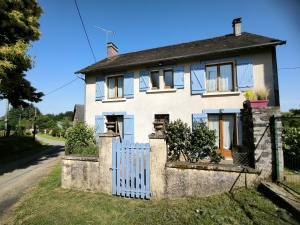Festive Season
So how do the French celebrate Christmas?
From tomorrow we are going to start the 'Clé's Countdown to a French Christmas', each day we will publish an article about Christmas in France, how it differs from the UK and America as well as other European cultures. Some of the quirks as well as the religious and traditional festive activities, we hope you like our 12 days of a French Christmas countdown.
In France, Christmas is a time for family and for generosity, marked by family reunions, gifts and chocolates for children, gifts for the poor, Midnight Mass, and le Réveillon.
We still arrange and meet with clients during December and over the holidays for property viewings in France, vendors still want to sell their house in France and you may have some time off work to visit France to look at some lovely French Houses BUT make sure you give us enough notice as it can be a busy period and of course most of our offices will have periods of closure over the festive period.

The celebration of Christmas in France varies by region. As you would expect most regions celebrate Christmas on the 25th of December, which is a bank holiday. However, in eastern and northern France, the Christmas season begins on 6 December, la fête de Saint Nicolas, and in some provinces la fête des Rois* is one the most important holidays of the Christmas season. In Lyon, 8 December is la Fête de lumières, when Lyonnais pay hommage to the virgin Mary by putting candles in their windows to light up the city.
*Epiphany (la fête des Rois) is usually celebrated the 6th of January, but in some places in France it is celebrated the first Sunday after January 1st.
French Christmas Traditions
French children put their shoes in front of the fireplace, in the hopes that Père Noël (aka Papa Noël) will fill them with gifts. Chocolate, fruit, nuts, and small toys will also be hung on the tree overnight. In some regions there's also Père Fouettard who gives out spankings to bad children (sort of the equivalent of Santa giving coal to the naughty). Pere Noel, like Santa, has a long, white beard, but wears a long, red robe that is trimmed with white fur and hooded. He is also portrayed as being thin, rather than fat.
AND shopping in France is as big an event as in the UK and eslewhere of course.
In 1962, a law was passed decreeing that all letters written to Santa would responded to with a postcard. When a class writes a letter, each student gets a response.
Le Réveillon
Reveillon is a huge traditional feast that takes place over the holiday season. It is eaten late at night, following Christmas Eve mass. What is served largely depends upon which area of the country you live in. This is probably one of the best reasons to visit France during Christmas. Although fewer and fewer French attend la Messe de Minuit on Christmas Eve, it is still an important part of Christmas for many families.
Le Réveillon is a symbolic awakening to the meaning of Christ's birth and is the culinary high point of the season, which may be enjoyed at home or in a restaurant or café that is open all night. Each region in France has its own traditional Christmas menu, with dishes like turkey, capon, goose, chicken, and boudin blanc (similar to white pudding). Examples of some the dishes served are oysters, pâté de foie gras, turkey, goose, salads, fruit, a Yule Log and, of course, wine.
Throughout the French Christmas season, there are special traditional desserts:
- La bûche de Noël (Yule log) - A log-shaped cake made of chocolate and chestnuts. Representative of the special wood log burned from Christmas Eve to New Year's Day in the Périgord, which is a holdover from a pagan Gaul celebration.
- Le pain calendeau (in southern France) - Christmas loaf, part of which is given to a poor person.
- La Galette des Rois (on Epiphany) - round cake which is cut into pieces and distributed by a child, known as le petit roi or l'enfant soleil, hiding under the table. Whoever finds la fève - the charm hidden inside - is King or Queen and can choose a partner.
French Christmas Decorations
The sapin de Noël is the main decoration in homes, streets, shops, offices, and factories. The sapin de Noël appeared in Alsace in the 14th century, decorated with apples, paper flowers, and ribbons, and was introduced in France in 1837.
Another important aspect of French Christmas celebrations is the crèche filled with santons, which is displayed in churches and many homes. Living crèches in the form of plays and puppet shows based on the Nativity are commonly performed to teach the important ideas of Christianity and the Christmas celebration.
Mistletoe is hung above the door during the Christmas season to bring good fortune throughout the year.
After Réveillon, it's customary to leave a candle burning in case the Virgin Mary passes by.
Is that Carol singing?
Some traditional French Christmas carols include "Un Flambeau", "Petit Papa Noel", "La Marche des rois", "Venez Divin Messie", "Nouelle Agreable" and "C'est la jour de la Noel."
Blog submitted by: David at Cle France.
For everything you need to know about French property visit www.clefrance.co.uk








